The Army has 17 different branches for Cadets to compete for. Being selected into one of the branches is the culmination of an assessment process that begins from the very first day a Cadet enters the ROTC program. Beginning with Fiscal Year (FY) 2021 the U.S. Army has implemented a new system to branch Cadets from its 274 ROTC programs across the country. The Army calls the new system Talent Based Branching.
The prior accessions process ranked all Cadets across the nation based off of factors such as their GPA, physical fitness test score, Advanced Camp performance, volunteer work, Color Guard participation, Ranger Challenge team, etc. During the beginning of their senior year, Cadets ranked in order of preference which of the 17 branches in the Army they want to assess into. The Army’s accessions process then uses the various factors mentioned to help decide which branch they will receive.
With Talent Based Branching, all these prior factors are still considered. The below FY21 chart shows the importance each of these factors has on how Cadets rank in the national Order of Merit List (OML).

Before the OML score is was what largely determined what branch a Cadet received; with Talent Based Branching, Cadets will also have the opportunity to interview with the branches they are interested in. The opportunity to interview each Cadet will allow the branches to learn more about each applicant to better inform branching decisions besides looking at an OML score. After the interview process the branches will then rank order their Cadet preferences. The below graphics show a simple explanation of how the process will work.
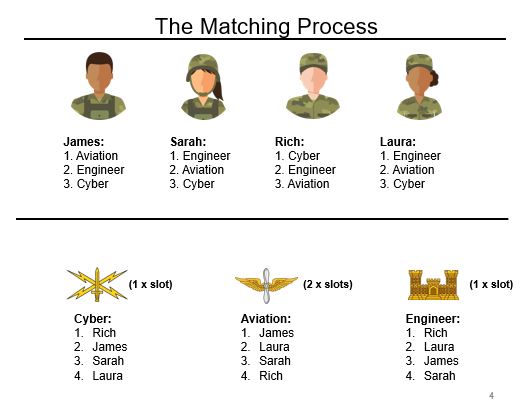
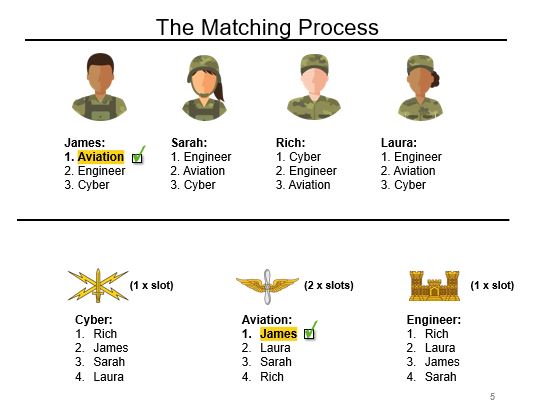

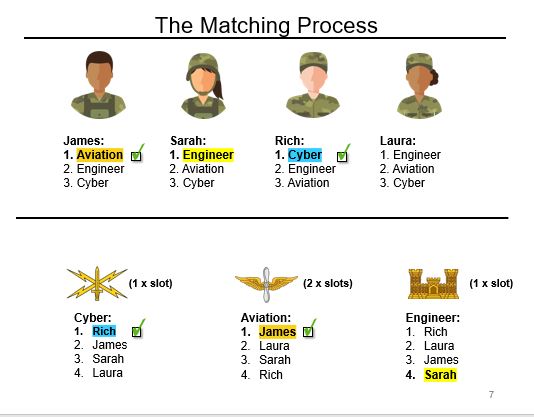
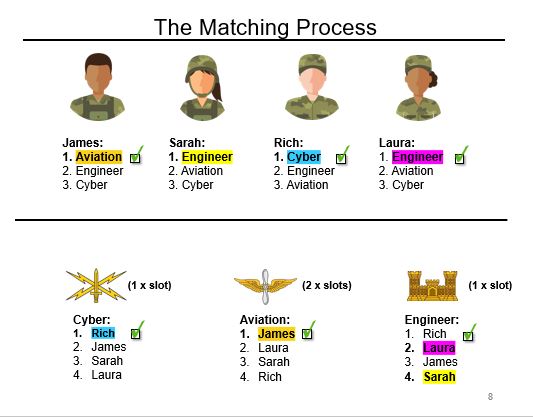
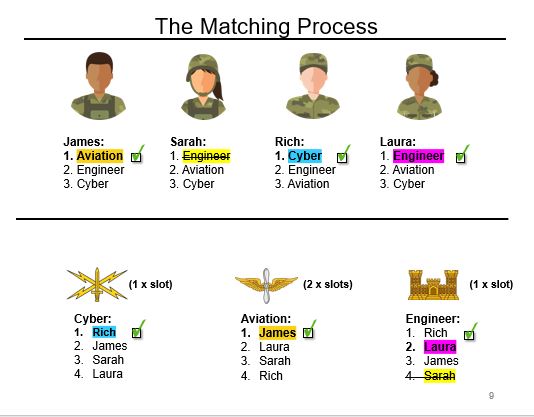
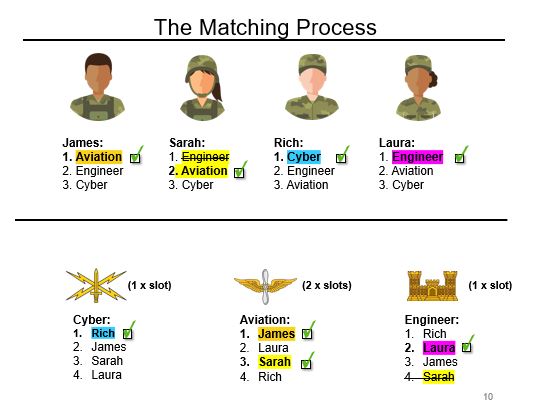
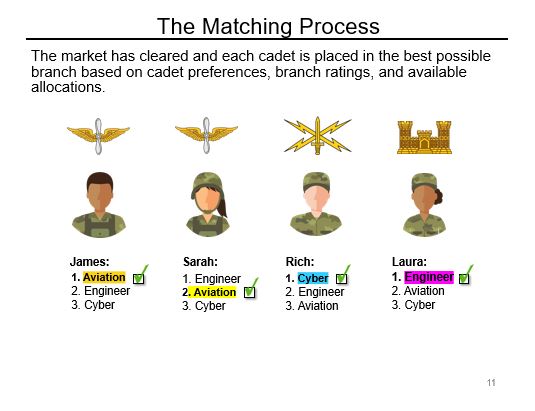
Talent Based Branching is a brand new system for accessing Army ROTC Cadets that will likely see modifications as it is implemented. The ultimate goal of it will remain the same which is allowing Cadets to have more of a say in what branches they access into. At EWU Army ROTC we remain committed to informing our Cadets of all the latest information in the Talent Based Branching process. If anyone has any questions about Talent Based Branching please leave a comment below and we will do our best to answer it.
Go ROTC! Go Fighting Eags!


Hi, What are chances to get a slot to branch in aviation in the coming years, Thanks
The aviation branch is the most difficult to branch into. It requires a high GPA, passing the flight physical, and scoring well of the SIFT test. The new Talent Based Branching also requires an interview with the branches you are pursuing. This interview is very important when it comes to receiving your top branch choice. If you put the work in you can attain an aviation slot. We have been getting one Cadet here every year into Aviation from EWU Army ROTC.
Hi Christian,
Branching Aviation is determined first by a passing SIFT score, Medical Flight Physical, and competitiveness. It also comes with a minimum 10 year service obligation. Please feel free to reach out for more specifics to lmoody1@ewu.edu.
Thank you,
Linda
The prior accessions process ranked all Cadets across the nation based off of factors such as their GPA, physical fitness test score, Advanced Camp performance team etc. The Army’s accessions process then uses the various factors mentioned to help decide which branch they will receive. With Talent Based Branching, all these prior factors are still considered. Thanks for you awesome article.
How hard is it to get into the Cyber Branch?
There are approximately 70 cadets from across the nation selected each year to become Cyber Operations Officers, so there’s definitely strong competition. Cadets need to have a computer science or STEM degree to qualify and the better a cadet performs as a scholar, athlete, and leader, the higher the chance that they’ll be selected by the cadet’s preferred Army career field (branch) – such as Cyber Operations. EWU has an NSA-certified National Center of Academic Excellence in Cyber Security, which ensures that our cadets will perform well during the career field selection process. Feel free to contact us for more information about this career field or the full-tuition scholarships we have towards a computer science or STEM degree at rotc@ewu.edu.